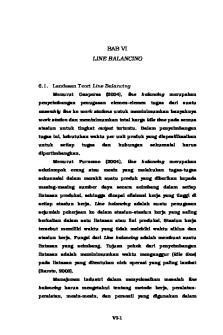Balancing Combustion Reactions PDF

| Title | Balancing Combustion Reactions |
|---|---|
| Course | Introduction To Chemistry |
| Institution | Stanford University |
| Pages | 3 |
| File Size | 125.8 KB |
| File Type | |
| Total Downloads | 19 |
| Total Views | 160 |
Summary
A guide and a few examples on how to Balance Combustion Reactions....
Description
Balancing Combustion Reactions
𝐶𝑥 𝐻𝑦 𝑂𝑧 + 𝑂2 → 𝐶𝑂2 + 𝐻2𝑂 In a typical chemistry class, the combustion reaction that you will encounter usually has something to do with Hydrocarbon 𝐶𝑥 𝐻𝑦 and sometimes Oxygen might be present 𝐶𝑥 𝐻𝑦 𝑂𝑧 . The Hydrocarbon always reacts with Oxygen in a combustion reaction 𝑂2 .
𝐶𝑥 𝐻𝑦 𝑂𝑧 + 𝑂2 And the side products are always Carbon dioxide and Water, if it’s a complete combustion reaction.
𝐶𝑥 𝐻𝑦 𝑂𝑧 + 𝑂2 → 𝐶𝑂2 + 𝐻2𝑂 But if you have a limited supply of Oxygen 𝑂2 , sometimes you might get other products such as Carbon Monoxide (CO) in addition with Carbon Dioxide.
𝐶𝑥 𝐻𝑦 𝑂𝑧 → 𝐶𝑂 + 𝐶𝑂2 But in a complete combustion, you will always have 𝐶𝑂2 𝑎𝑛𝑑 𝑤𝑎𝑡𝑒𝑟 𝐻2 𝑂. EXAMPLE 1. If we react Methane with excess oxygen. The products will be Carbon dioxide and water.
𝐶𝐻4 + 𝑂2 → 𝐶𝑂2 + 𝐻2𝑂 STEPS: To balance it, start with Carbon first. Then Hydrogen and Oxygen.
𝐶𝐻4 + 𝑂2 → 𝐶𝑂2 + 𝐻2𝑂 Carbon on reactant: 1
Carbon on product: 1
Then the Hydrogen. We have 4 on the left and 2 on the right. So put 2 at the beginning or the coefficient of 𝐻2 𝑂 to balance the Hydrogen atoms. (Note: You can only add to the coefficient but not to the subscript).
𝐶𝐻4 + 𝑂2 → 𝐶𝑂2 + 2𝐻2𝑂 Hydrogen on reactant: 4
Hydrogen on product: 4
So now we have 2 Oxygen atoms on the reactant and 4 Oxygen atoms on the product. Therefore, we need to put 2 o the 𝑂2 to balance it.
𝐶𝐻4 + 2𝑂2 → 𝐶𝑂2 + 2𝐻2 𝑂 Oxygen on reactant: 4
Oxygen on product: 4
EXAMPLE 2. Let’s react propane with Oxygen Gas. The product will also be Carbon dioxide and Water.
𝐶3𝐻8 + 𝑂2 → 𝐶𝑂2 + 𝐻2 𝑂 STEPS:
𝐶3𝐻8 + 𝑂2 → 3𝐶𝑂2 + 𝐻2𝑂 Carbon on reactant: 3
Carbon on product: 3
𝐶3𝐻8 + 𝑂2 → 3𝐶𝑂2 + 4𝐻2𝑂 Hydrogen on reactant: 8
Hydrogen on product: 8
Now we have 2 Oxygen atoms on the reactant and 10 Oxygen atoms on the product so:
𝐶3𝐻8 + 5𝑂2 → 3𝐶𝑂2 + 4𝐻2𝑂 Oxygen on reactant: 10
Oxygen on product: 10
EXAMPLE 3. React ethane with oxygen gas. The product will also be carbon dioxide and water.
𝐶2𝐻6 + 𝑂2 → 𝐶𝑂2 + 𝐻2 𝑂 STEPS:
𝐶2𝐻6 + 𝑂2 → 2𝐶𝑂2 + 𝐻2𝑂 Carbon on reactant: 2
Carbon on product: 2
𝐶2𝐻6 + 𝑂2 → 2𝐶𝑂2 + 3𝐻2 𝑂 Hydrogen on reactant: 6
Hydrogen on product: 6
So now we have 2 Oxygen atoms on the reactant and 7 Oxygen atoms on the product. To balance it:
7 𝐶2𝐻6 + 𝑂2 → 2𝐶𝑂2 + 3𝐻2 𝑂 2 But we can’t keep a fraction in the coefficient, so we need to multiply both sides (reactant and product) by the denominator which is 2, to eliminate the fraction. (Note: Only the coefficient will be multiplied and not the subscript) 7
2 (𝐶2𝐻6 + 𝑂2 → 2𝐶𝑂2 + 3𝐻2 𝑂) 2 2
2𝐶2𝐻6 + 7𝑂2 → 4𝐶𝑂2 + 6𝐻2 𝑂
EXAMPLE 3. React butane with oxygen gas. The product will also be carbon dioxide and water.
𝐶4𝐻10 + 𝑂2 → 𝐶𝑂2 + 𝐻2𝑂 STEPS:
𝐶4𝐻10 + 𝑂2 → 4𝐶𝑂2 + 𝐻2 𝑂 Carbon on reactant: 4
Carbon on product: 4
𝐶4𝐻10 + 𝑂2 → 4𝐶𝑂2 + 5𝐻2 𝑂 Hydrogen on reactant: 10
Hydrogen on product: 10
The Oxyge atoms in the reactant is 2 and the Oxygen atoms in the product is 13. So:
𝐶4𝐻10 +
13 𝑂 → 4𝐶𝑂2 + 5𝐻2 𝑂 2 2
But we can’t keep a fraction in the coefficient, so we need to multiply both sides (reactant and product) by the denominator which is 2, to eliminate the fraction. (Note: Only the coefficient will be multiplied and not the subscript)
2 (𝐶4𝐻10 +
13 2
𝑂2 → 4𝐶𝑂2 + 5𝐻2 𝑂) 2
2𝐶4𝐻10 + 13𝑂2 → 8𝐶𝑂2 + 10𝐻2 𝑂...
Similar Free PDFs

Balancing Combustion Reactions
- 3 Pages

Balancing Chemical Reactions
- 4 Pages

line balancing
- 22 Pages

Line Balancing
- 21 Pages

Balancing equations 02
- 2 Pages

Internal Combustion Engine
- 5 Pages

Static and Dynamic Balancing
- 14 Pages

3 Combustion Analysis - S
- 6 Pages

ALEKS Note : Combustion Analysis
- 1 Pages

Previo calor de combustion
- 3 Pages

Combustion Espontanea Humana
- 7 Pages

Gravity balancing act
- 5 Pages
Popular Institutions
- Tinajero National High School - Annex
- Politeknik Caltex Riau
- Yokohama City University
- SGT University
- University of Al-Qadisiyah
- Divine Word College of Vigan
- Techniek College Rotterdam
- Universidade de Santiago
- Universiti Teknologi MARA Cawangan Johor Kampus Pasir Gudang
- Poltekkes Kemenkes Yogyakarta
- Baguio City National High School
- Colegio san marcos
- preparatoria uno
- Centro de Bachillerato Tecnológico Industrial y de Servicios No. 107
- Dalian Maritime University
- Quang Trung Secondary School
- Colegio Tecnológico en Informática
- Corporación Regional de Educación Superior
- Grupo CEDVA
- Dar Al Uloom University
- Centro de Estudios Preuniversitarios de la Universidad Nacional de Ingeniería
- 上智大学
- Aakash International School, Nuna Majara
- San Felipe Neri Catholic School
- Kang Chiao International School - New Taipei City
- Misamis Occidental National High School
- Institución Educativa Escuela Normal Juan Ladrilleros
- Kolehiyo ng Pantukan
- Batanes State College
- Instituto Continental
- Sekolah Menengah Kejuruan Kesehatan Kaltara (Tarakan)
- Colegio de La Inmaculada Concepcion - Cebu



